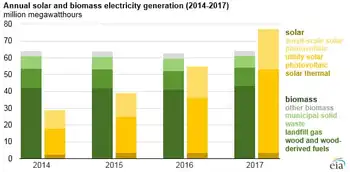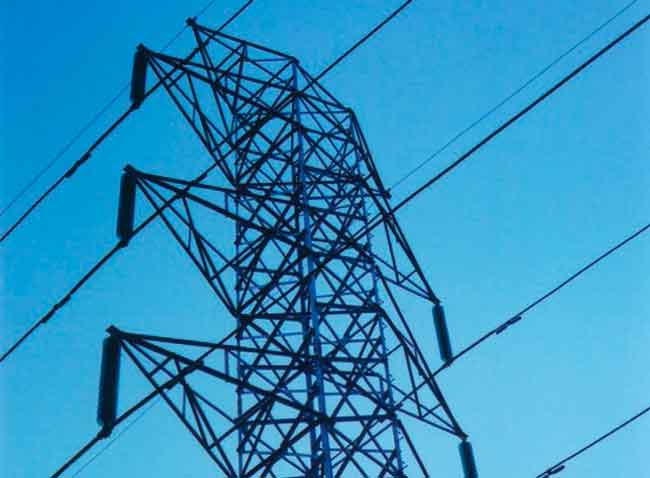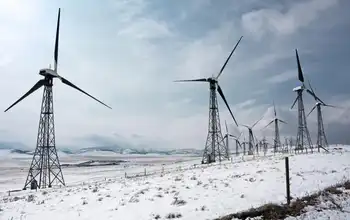New York report says electric bills dropped 16 percent
NEW YORK STATE - Competition in New York's energy markets has cut inflation-adjusted electric bills for residents by an average of 16 percent from 1996 to 2004, a new report by state regulators said recently.
But some have charged the report is flawed, and gives too rosy a picture of the deregulated market.
The state Public Service Commission report found that the actual electricity costs that residential customers pay through their rates have been essentially flat during that eight-year period, even after inflation, as New York opened its energy markets to competition.
"There is good progress," said John Reese, the PSC's director of economic development and policy coordination. "And there are opportunities going forward for improvement."
While the report focused on the impact of competition, Reese said "a substantial portion" of the cost reduction is due to the rate reductions included in recent agreements with utilities, such as National Grid, on what they charge to deliver power to their customers.
While the report did not include 2005 price data, Reese said that electricity prices last year were "substantially higher" because of the soaring cost of the natural gas used to generate much of the state's power. Final 2005 price data was not available, he said.
Paul Tonko, D-Amsterdam, chairman of the state Assembly Energy Committee, said he thinks the report lacks credibility because it did not include the high rates customers saw in 2005.
"I think they fit it to that time frame to make it work," Tonko said.
Tonko said some regulation, such as requiring some form of hedging, could help mitigate price fluctuations. He said New York is the only state that allows the full commodity costs to be passed through entirely to the consumer.
The form of deregulation the state adopted, "really has failed consumers," Tonko said.
However, PSC officials said residential customers now have a wide range of choices for electricity suppliers and a variety of pricing offerings, from fixed prices to variable pricing schemes. Thirteen suppliers have been approved by the PSC to sell electricity to residents in the National Grid service territory.
"We think customers are better off when they have a choice and that they ought to have a choice," said David Flanagan, a PSC spokesman.
Most of the focus from marketers initially has been on the biggest industrial and commercial customers, which have migrated to non-utility suppliers in much greater numbers. For residential customers, the transition has been much slower, with 6.7 percent of electric customers buying their power from an energy services company and 8.5 percent of all natural gas customers working with a non-utility supplier.
As of November, 9.3 percent of National Fuel Gas Co.'s residential heating customers were purchasing their gas from an energy services company. PSC statistics show that 6 percent of National Grid's residential electric customers had switched to an energy services company by December, while 6.8 percent of New York State Electric & Gas Corp. customers were using a non-utility supplier.
Reese said the residential market has been slower to develop because those customers use small amounts of power and require more expensive and sophisticated marketing programs to reach.
"The approach we've taken has been that this is a marathon, rather than a sprint," said Ronald Cerniglia, who heads the PSC's retail market development office.
Gerald Norlander, the executive director of the Public Utility Law Project in Albany, which assists low-income residents, said the opening of New York's energy markets has been "a disaster" that has done little to help residential customers.
He said the relative stability of electricity costs among upstate utilities, including National Grid and NYSEG, was partly due to long- term supply contracts that the utilities had. Those contracts protected consumers from increases in the commodity price of electricity, with further stability coming from the long-term rate agreements.
"That acted as ballast and is masking what's really going on," Norlander said. "The introduction of spot market pricing has not been hitting residential customers."
The report said the restructuring of the state's energy markets has led to more than 4,000 megawatts of new generating capacity being added in New York, all of it in downstate areas where power supplies are tightest.
"This report confirms what those of us involved in the power generating industry have known for years: Competition works in New York," said Gavin Donohue, the president of the Independent Power Producers of New York.
"A competitive marketplace encourages efficiency by generators, and that, in turn, not only benefits consumers, but it benefits the environment as well," Donohue said in a statement.
But the report also said New York should renew its Article X law for siting power plants if it is going to be able to meet the state's future energy needs. That law, which streamlines the process for locating power plants, expired more than a year ago.
Related News

Solar Becomes #3 Renewable Electricity Source In USA
WASHINGTON - Electricity generation from solar resources in the United States reached 77 million megawatthours (MWh) in 2017, surpassing for the first time annual generation from biomass resources, which generated 64 million MWh in 2017. Among renewable sources, only hydro and wind generated more electricity in 2017, at 300 million MWh and 254 million MWh, respectively. Biomass generating capacity has remained relatively unchanged in recent years, while solar generating capacity has consistently grown.
Annual growth in solar generation often lags annual capacity additions because generating capacity tends to be added late in the year. For example, in 2016, 29% of total…




